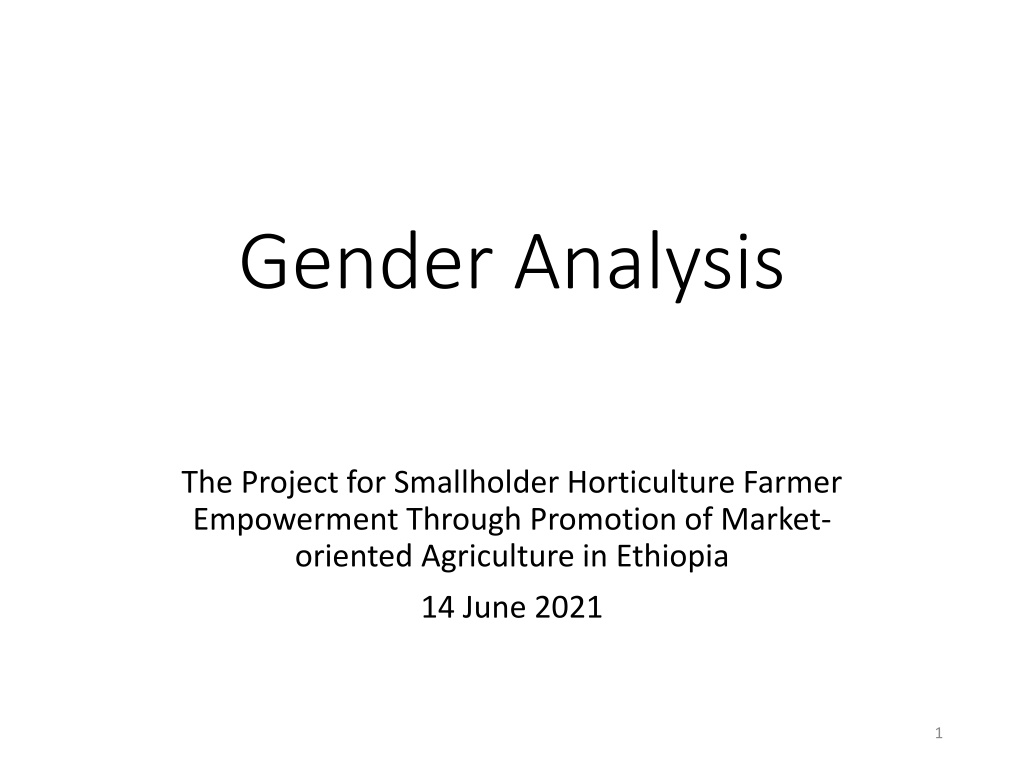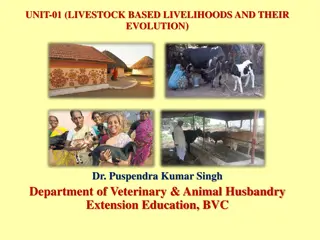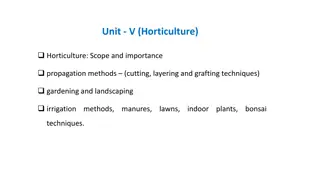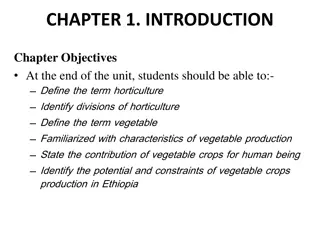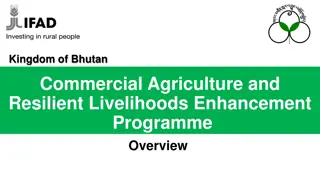Understanding Gender Analysis in Smallholder Horticulture Farming Empowerment Project
The article discusses the concept of gender analysis within the context of a project aimed at empowering smallholder horticulture farmers in Ethiopia. It covers the differences between sex and gender, the purpose and methods of conducting gender analysis, and the utilization of its results. Practical tools and techniques for conducting gender analysis are also outlined, emphasizing the importance of understanding gender roles and responsibilities to enhance project efficiency and effectiveness.
Download Presentation

Please find below an Image/Link to download the presentation.
The content on the website is provided AS IS for your information and personal use only. It may not be sold, licensed, or shared on other websites without obtaining consent from the author. Download presentation by click this link. If you encounter any issues during the download, it is possible that the publisher has removed the file from their server.
E N D
Presentation Transcript
Gender Analysis The Project for Smallholder Horticulture Farmer Empowerment Through Promotion of Market- oriented Agriculture in Ethiopia 14 June 2021 1
Todays Programme 1. What is Gender Analysis? 2. How to Conduct Gender Analysis 3. How to Utilize Results of Gender Analysis 2
Sex and Gender Gender Socially and culturally constructed Context-specific, time-specific, and changeable. Gender determines what is expected, allowed and valued in a woman or a man in a given context. Also refers the relationships between women and men and girls and boys. The relationships are not equal, but hierarchic. (women=subordinate, men=superior) Sex Biologically determined Biological characteristics of men and women are universal and not affected by where you are, how old you are, etc 3
1. What is Gender Analysis? A tool aiming to reveal differences between women and men of a project target in terms of situations, roles, issues, needs, etc. Results of gender analysis can be used : to raise people s awareness about their differences (farmers, extension officers, government officers, Japanese experts, etc); to improve project activities to effectively achieve its project purpose. 4
Basic analysis tools: Activity Profile Daily Activity Profile Access and Control Profile Gender Action Plan Exercise with farmers Famers must be divided into female farmer group(s) and male farmer group(s) 5
2. How to Conduct Gender Analysis Activity Profile Purpose: To understand roles and responsibilities of women and men in family in productive, reproductive and community activities. Productive activity: Work for income and subsistence Reproductive activity: Domestic work, childrearing, necessary work to support productive activity Community activity: Activities for community to provide items of collective consumption 6
How to do: Ask women and men in separate groups to identify productive, reproductive and community activities. Ask them who in the family does which activities and tick ( ) the columns of either women or men who regularly does the activities. 7
How to interpret: Activity Profile from a Project on Rice Cultivation Productive Activity Reproductive Activity Source: JICA (2016). Teaching Guidelines: Gender and Agriculture/Rural Development. 8
Group Work List up productive, reproductive and community activities that female and male farmers in your community engage in. * Productive activity: all tasks necessary for horticulture farming. Tick ( ) the columns of either men or women who regularly does the activities. Share your group work result with participants. 9
Daily Activity Profile Purpose: To understand roles and responsibilities of women and men in a family and how many hours they spend in a day for their roles and responsibilities. 10
How to do: Ask women and men in separate groups to make a daily activity calendar of their own with information what they do in a day and how long it takes. Make daily activity calendars for farming season and off-farming season, respectively, if necessary. Source: JICA (2016). Teaching Guidelines: Gender and Agriculture/Rural Development. 11
How to interpret: Example of Daily Activity Calendar 12
Another Example of Daily Activity Calendar Women Men Source: JICA Smallholder Horticultural Empowerment Project in Kenya 13
Group Work Illustrate daily activity calendar of your group only. Share your group work result with participants. 14
Access and Control Profile Purpose: To understand who in the family can use resources (=ACCESS), and who in the family manages/owns them and makes decisions about their use, including whether they can be sold (=CONTROL). Recourses: Anything that can be owned and used to obtain a benefit from it. Eg:land, labour, livestock, machines, tools, income, credit service, training and agricultural extension. 15
How to do: Ask women and men in separate groups to identify resources which are crucial in shaping family s lives and dignity. Ask them who has access to and control over resources in the family and tick ( ) the columns of either women or men who has access to and control over resources. 16
How to interpret: Access and Control Profile from a Project on Rice Cultivation Access Access Women Control Control Resources/ Services Land Farm tools Dairy cow Poultry Training Men Men Women 17
Group Work List up necessary resources for farmers to engage in horticulture farming in your community. Tick ( ) the columns of either women or men who has access to and control over resources. Share your group work result with participants. 18
Gender Action Plan Purpose: To reduce women s heavy workload at household by making action plan with family members. 19
How to do: Agree on the participants that objective of this exercise is to reduce women s heavy workload in the household. Ask women and men in same groups to identify what is the most tedious work in their households . Objective Activities By when Resources Implementer Monitor Most tedious work Fill the table by discussing as a group Women s heavy workload reduced Fetching firewood Purchasing of improved cooking stove May2021 when sales horticulture products in the season done. Money (1,000 ETB) Labor to construct it in the kitchen Each member group DAs and group leader the of Completion date should be specific. next is 20
Group Work Draw a table and filling each column by discussing with men and women. Action plan should be manageable by community members without external support (labour & financial) After the group work, all the family members need to understand what is the most tedious work for women and how they can overcome such issues by supporting women. 21
3. How to Utilize Results of Gender Analysis Share results of female and male group work in plenary to raise people s awareness (farmers, extension officers, government officers, Japanese experts, etc) about different situations, roles, issues, needs, etc between women and men. Photo: JICA (2016). Teaching Guidelines: Gender and Agriculture/Rural Development. 22
Reflect results of female and male group work in project activities to effectively achieve its project purpose. Project Framework Results of Analysis <Project Purpose Increasing income from vegetable production by realizing market oriented agriculture. Both female and male farmers engage in vegetable farming. How to reflect? Women are so busy with reproductive activity as well as productive activity. <Activities> Conduct market survey by farmers Introduction of basic cultivation techniques. Men have more control over resources than women do. 23
